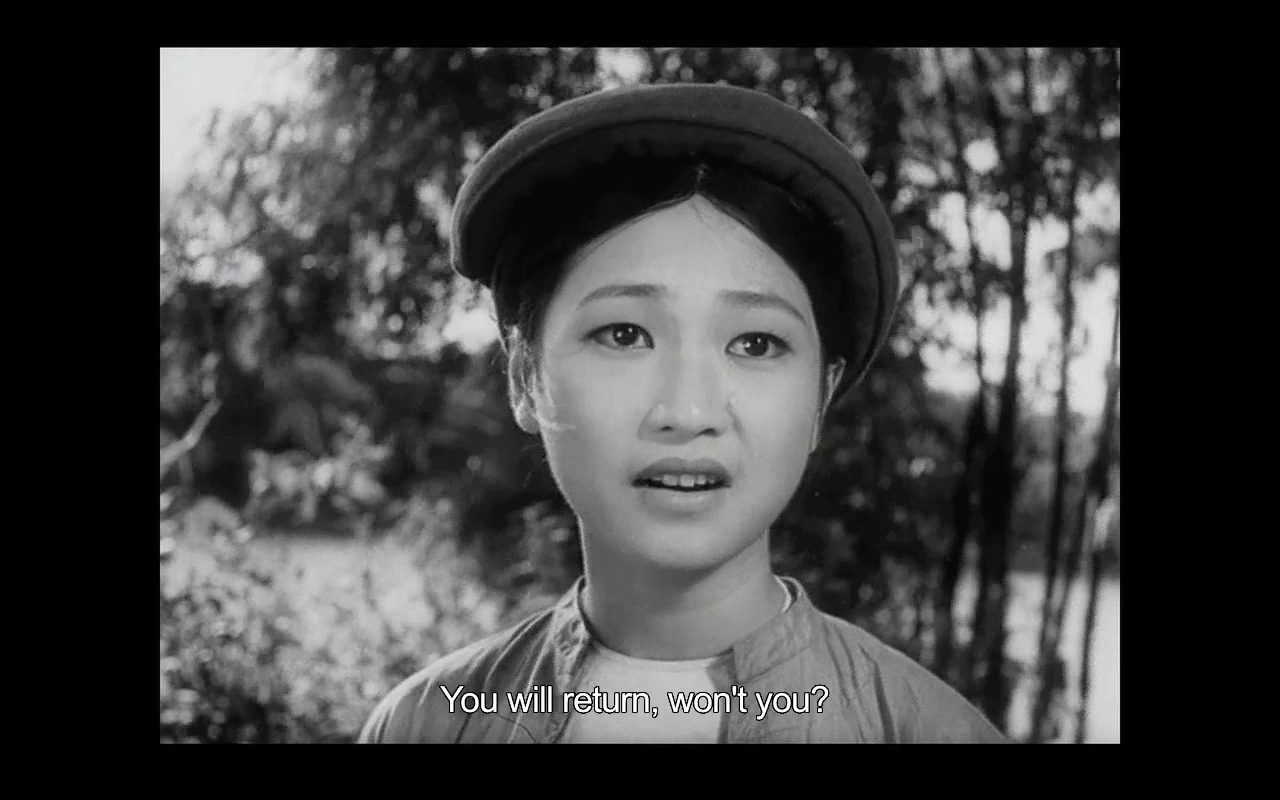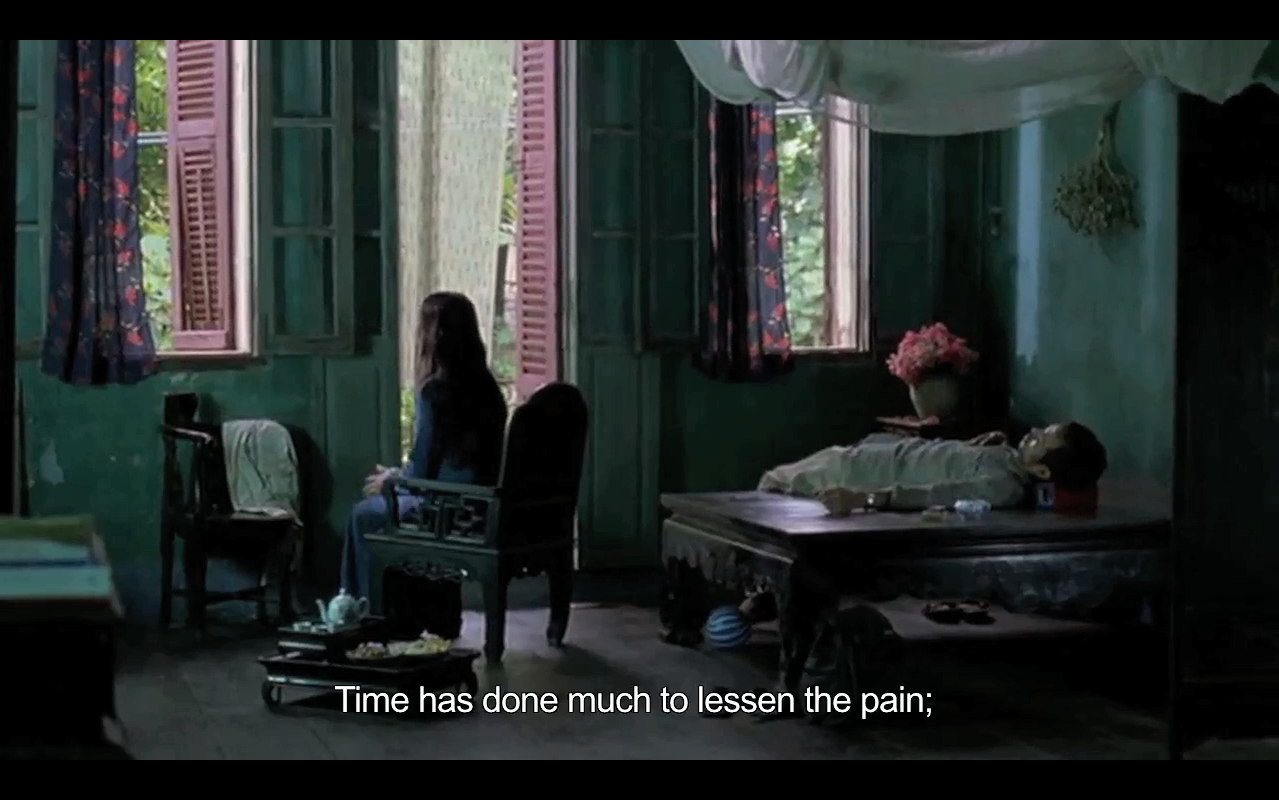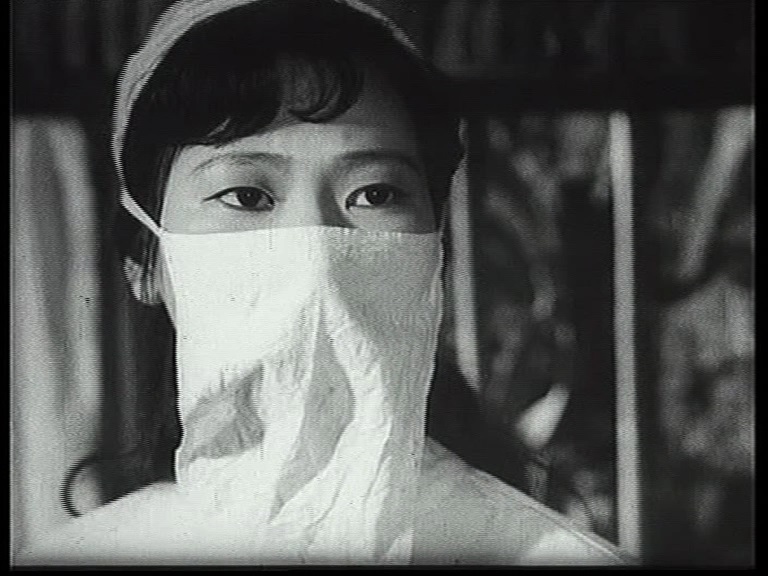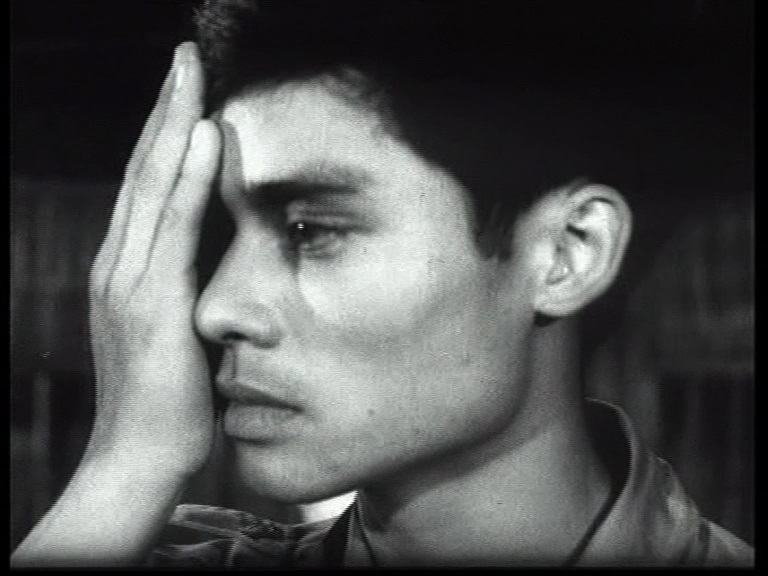【亞太博物館連線專欄】睜開智慧之眼—阮純詩動態影像中的女性
A Visionary- An Essay on the Woman in Nguyễn Trinh Thi’s Moving Images
睜開智慧之眼—阮純詩動態影像中的女性
A Visionary: An Essay on the Woman in Nguyễn Trinh Thi’s Moving Images
作者:Bùi Kim Đĩnh(德國哥廷根大學社會文化人類學與民族誌學系博士候選人)
越南藝術家阮純詩(Nguyễn Trinh Thi)藉由佛教濾鏡觀看動態影像中的女性。本文闡述藝術家如何透過兩部藝術電影《十一個男人》(Eleven Men)和《前線戰歌》(Song to the Front),重新定義父權社會中的女性角色。透過重複使用越南電影的片段,結合來自不同文化的文本或音樂,為女性創造轉世至不同藝術人生的可能性。由此,越南婦女的形象被轉化成女性的代表,其社會地位也被重新修正。此外,透過紀實錄像裝置,越南電影史上的女性也被批判性地呈現。在此種社交與媒體的框架中,藝術家眼中的女性決定從二元對立的舞台隱退,透過富有智慧的眼睛看待庸俗的世界,即成為女性解放自我的方式。
關鍵字:女性主義、智慧之眼、動態影像、錄像、當代藝術
Looking at the woman in Nguyễn Trinh Thi’s moving images through a Buddhist lens, the article carries out how Trinh Thi redefines the woman’s role in the patriarchal society in two artworks Eleven Men and Song to the Front. By reusing found footages from previous Vietnamese films combined with another universal text or music from different cultures, the artist creates possibilities for the woman to reincarnate into different artistic lives. From that, a Vietnamese woman image is turned into a representative of the woman, whose social positions are revised. Moreover, via a chronicled image installation, the woman in the history of Vietnamese cinema is also critically presented. In such social and media framings, the Trinh Thi’s woman decides to step backwards from the stage of dualism to view the vulgar world through her wisdom eye as a way of liberating herself.
Keywords: feminism, moving images, Trinh Thi, contemporary art, Vietnam
前世我見到她與悲傷的乾草莖
我見到她坐在那兒哭泣,傾盆大雨正落在午後樹林裡
樹木轉為枯黃,但她仍然沒回家
樹林裡吹著冬天的風,她一個人站得孤寂
前世我見到她和一枚孤單的太陽
我見到她坐在那兒唱歌,雲層漸漸覆蓋了森林
在秋季變色的樹林裡,雲朵悲傷地飄浮著
在天寒地凍的冬日樹林中,雨繞樹而行
在每個日子裡,我仍希望、我仍持續等待著她
我希望她能回到這裡,於是生命值得慶賀
春天來臨了,親愛的,請回來吧!古老的樹林已閉鎖,親愛的,請出來吧!
古老的樹林已閉鎖、古老的樹林已閉鎖,親愛的,請出來吧!
〈古林已閉〉(The Old Wood Has Closed) 1
〈古林已閉〉是鄭公山(Trịnh Công Sơn)1972年譜寫的詩暨歌曲,2描繪一位遭遺棄女人的形象,她被困在一片沉悶的森林裡,這片森林是中陰身(bardo)的隱喻,中陰身是一個描述死亡和重生之間狀態的佛教概念,而女人的情人則正在等待,她在不同轉世中出現在他的人生裡。在這首詩中,情人有意識且有能力打開「第三隻眼」—智慧之眼,因此能看到他所愛的人處於這種過渡狀態,但女人無法提升超然洞察力來解放自己,過渡狀態對她而言可能變得危機四伏。由於情人站在有識見的立場,他只能在絕望中呼喚著她。
從佛教教義退一步來看,沉悶的森林象徵父權社會,女性被複雜的方式困住,從未找到脫離方法。看著現代女性在社會中的地位,我跟詩人一樣,也想鼓動女性「走出去」,讓自己從邊緣狀態解放出來,但是要怎麼做呢?將近半世紀後,藝術家阮純詩終於為女性創造轉世到不同人生的機會。透過重複使用越南電影中,經典越南美女演員阮如瓊(Như Quỳnh)的影像,這些過去由國營越南電影製片廠製作的片段,在阮純詩的作品《十一個男人》和《前線戰歌》中,3成功將女性形象從未覺醒轉化成有遠見的角色。在上述作品中,女性不僅有能力看穿自己在社會中扮演的角色,甚且能揭示另一層真實的自己,引起我們反思自己的狀態。
十一個男人—再現到展現的女性啟蒙
在28分鐘長、混用黑白及彩色影像的影片《十一個男人》中,女主角以雙重身分呈現:其中一個身分透過他人的目光來講述自己的生命故事,另一個身分則是實際過著自己的生活。「我有十一個男人。」敘事從女人的弦外之音開始,將她的生活故事分為兩半:黑白的前半部分表明年輕時的性格;後半的彩色影像則描繪年齡漸長後的形象。最重要的是,後半的女人看起來完全像第二個人,她可以擺脫前面的脈絡,從一定的時間距離之外凝視自己,講出自己的故事。

在早期的黑白時代,女人先後與七名男子接續生活。在這些情景中,她看起來像一名年輕女子,充滿各種情緒,無論是快樂或悲傷、肯定或困惑,整體而言,她在每段關係中都顯得無辜而被動(圖1),她的親密關係隱藏在大眾的視線外。但從第八個男人開始,她的形象變成了彩色,彷彿成了另一個她,行為徹底的膽大妄為,變得更加主動、感傷,完全清楚地知道自己要什麼,甚且將親密關係暴露出來,就像這才是她原本的性格(圖2)。

變化不僅發生在女性形象及角色上,越南1986年的經濟改革(革新ĐổiMới政策)4,也成為越南電影史上的分野。從1966至2000年,綜觀超過三十年間製作的一系列越南經典電影的場景構成,會發現革新開放成為顯著的里程碑,標誌著越南媒體記錄女性的轉變。在此之前,女性的形象無辜、忠實又被動,滿足國家社會主義宣傳和戰爭機制的需求。其後,則在異國情調的環境中,成為經驗豐富而傷感憂鬱的女性,為商業化的世界服務。這種政治再現(politics of presentation),在《十一個男人》中格外顯露諷刺意味,影像還結合卡夫卡1919年的短篇小說〈十一個兒子〉的改編文本,在全新的呈現中,女性不再是被再現(presented),而是自己展現(present)自己的模樣。
前線戰歌—戰爭中的女性凝視

不僅站在自我呈現的積極位置,同樣的,阮純詩的女性形象,也有能力轉世到另一種人世生活中。在五分鐘影片《前線戰歌》中,扮演護士的女性,隨著時間變化,不斷觀察男性的改變,彷彿一位沉默的見證者(圖3)。《前線戰歌》中的動態影像是將1973年製作的宣傳片重新剪輯,原始影片讚揚戰場上士兵的榮耀,但在重新剪輯的影片中,阮純詩將敘事焦點從男性轉移到女性,結合斯特拉汶斯基(Stravinsky)《春之祭》(The Rite of Spring)的音樂。歌劇《春之祭》描寫一場神聖儀式,儀式裡自我犧牲的年輕女孩跳舞至死,以頌讚春神,戲劇性的背景音樂將影像深化為質問意識形態、信仰和性別,在社會中扮演的角色與意義。
在阮純詩的影像中,原始電影裡的愛國主義變成危險的存在,足以將人類拉入暴力漩渦;士兵不再是英雄,而是時代的犧牲品,及女性凝視的客體(圖4);在這種敘事下,是非對錯,突然間變得極其矛盾和爭議。無需任何對話,僅透過超越環境、畫框外,第三隻眼的安靜凝視,即展現出來。在這兩部影片中,透過啟發內在觀點,我們可以看到擁有智慧的無盡的愛,一個接一個,在成熟的過程中,慢慢把女性的性格建立起來。

硬幣的兩面—無法擺脫社會脈絡的女性
從這種智慧出發,女性對於父權世界如何被惡毒與庸俗包圍充滿精準洞見,就如同2016年6月在柏林的「英雄母親」國際當代藝術展所揭示的5。該展共展出來自20個(前)共產主義國家、31位女性藝術家的44件作品,其中也包括阮純詩的作品,揭示後共產主義中「英勇女性」觀念的重新定義。6其他藝術家的作品,大都將女性表達成英雄主義與戰爭機制的受害者、反對者或運動份子,但阮純詩圖像中的女性卻得以從該種舞台中隱退,讓觀眾更深入地反思我們的人性。
然而,在另一個平行軌道上,仍有女性依舊困在越南社會主義共和國的英雄母親角色之中。與柏林的案例相比,河內越南婦女博物館常設展中的女性,就像月亮背後的陰暗面,女性形象仍是由社會主義價值觀建構,充滿社會功能:結婚、生育、養育家庭和成為「英雄母親」。為了服務政治工具,她們失去的孩子和丈夫被視為「爭取國家統一」的犧牲和榮譽。7不會有人從其他面向來審視越南女性,她們也無法脫離背景脈絡,重新檢視和回顧自己的生活。
將柏林和河內兩座城市呈現女性的方式並置觀看,這兩種女性版本宛如硬幣的兩面,要不就是英雄主義的贊成派、要不就是反對派,都無法擺脫各自的社會脈絡,重新定義自己在社會中扮演的角色。與鄭公山詩中所描繪的女性情況相同,她們仍然在兩種狀態間擺盪,不管是在社會主義和後社會主義的展覽中,或是生活在其中的創傷、夢想,她們永遠無法轉世。
在阮純詩的影像中,女性有幸打開智慧之眼,擺脫社會脈絡,選擇基於自己的智慧和同理心來自我定位,以此作為一種解放自己和獲得內在幸福的方式。作為時間光譜的見證者,阮純詩理解世界的不完美,時不時給予人類耐心的愛。然而,透過她的啟蒙,我們一方面可以看到她的自我滿足,但另一方面,我們也可以看到一個絕望世界的黑暗面—這個世界既沒有任何進步,也沒有更好的改變,即使已經有許多女性轉生到來世。透過女性的視野,我們無法得知,究竟該保持自己的觀察位置以獲得靈魂的寧靜?或者該成為幫助粗鄙世界變成美好所在的戰士?
謝誌:
感謝賴瑛瑛教授邀稿,也感謝阮純詩、Phan Thuỳ Phương和Nguyễn Quốc Thành協助審閱初稿;感謝安德雅勞森(Andrea Lauser)的鼓勵;更要特別感謝阮純詩慷慨提供她的圖像讓我在此重製。
德國哥廷根大學社會文化人類學與民族誌學系的原創博士研究,獲弗里德里希‧瑙曼自由基金會(Friedrich Naumann Foundation),從2016到2019年之贊助,才得以發展本研究:《從1990年代開展的越南獨立藝術—公民社會的政治權力?》(Independent Art in Vietnam since the 1990s. Political Power for a Civil Society?)。
A Visionary: An Essay on the Woman in Nguyễn Trinh Thi’s Moving Images
Author: Bùi Kim Đĩnh(PhD candidate at the Institute of Social and Cultural Anthropology of George-August University in Göttingen, Germany) Image credits:All images are by Nguyễn Trinh Thi unless specified otherwise.
I saw her and a sad dried stalk of grass in the previous lives
I saw her sitting crying when rain poured down in the afternoon wood
The wood turned yellow, she was not yet home
The wood blew the winter wind, she stood alone
I saw her and a lone sun in the previous lives
I saw her sitting singing when cloud came to the wood
In the changing autumn wood, flied sadly clouds
In the freezing winter wood, gurgled the rain
I still hope, I still keep waiting for her in every solitary day
I still hope she is back there, so the life can celebrate then
Spring comes, darling, please return! The old wood has closed, darling, please get out!
The old wood has closed, the old wood has closed, darling, please get out!
The Old Wood Has Closed 1
The Old Wood Has Closed is a poem and song composed in 1972 by Trịnh Công Sơn2 portraying an image of a derelict woman who gets stuck in a dreary forest as a metaphor for bardo, a Buddhist notion describing a middle state between death and rebirth, while her lover is waiting for her reincarnation in many different of his lives. In the poem, the lover is conscious and able to open his third eye – the eye of wisdom to view his beloved helpless in such transitional situation which can become dangerous place since she can not raise her transcendental insight to liberate herself. Being at a visionary’s position, he is calling her in his hopelessness.
Step backwards from the Buddhist meanings, the dreary forest could be seen as a patriarchal society where the woman get caught by its complex patterns and never find out a way to escape. Looking at the woman’s position in our nowadays society, like the poet, I also want to urge the woman to “get out” and set herself free from that liminal state. But how? Almost a half century later, artist Nguyễn Trinh Thi created chances for the woman to reincarnate into different lives. Reusing found footages from a range of Vietnamese classic fictional films featuring the same central actress, Như Quỳnh – a representative of Vietnamese beauty, produced mostly by the state-owned Vietnam Feature Film Studio, Trinh Thi revives the woman from a unawaked human to a visionary in Eleven Men and Song to the Front.3 In these works, the woman is capable to reveal not only her roles in society but also the other real, in which we are able to reflect ourselves.
In 28 minutes black and white and color movie Eleven Men, the woman presents herself as a double person: one telling her life by looking at the others and the other living her life. “I have eleven men” – the narrative begins with the woman’s voiceover and presents her life story in two halves: the first half in black and white indicates her character once she was young; and the second half in color depicts her images when she is getting older. Above all, the woman appears as a second person, who could get out of those contexts and gaze at herself from a certain distance of time to tell her story.

In her early age in black and white, the woman firstly lives with her seven men one after the other. In these scenarios, she appears as a young woman fulfilled with different emotions either happy or unhappy, sure or confused, but overall she seems to be innocent and passive in her relationship (fig. 1). Her intimacy is more hidden in the public eyes. But from the eighth man on, her appearance changes into color as if another one of her. Her behaviors change completely into audacity. She becomes more active, melancholy and utterly knows exactly what she wants and exposes her intimacy more often as if her natural character (fig. 2).

This change happens not only in the woman’s character but also in Vietnamese cinematic history before and after the economic reform (Đổi Mới policy)4 in 1986. In the composition of scenes from a serials of Vietnamese classic movies produced over three decades from 1966 to 2000, Đổi Mới becomes a milestone marking a shift of chronicling the woman in Vietnamese media. Before this milestone, the woman is presented in an innocent, faithful and passive shape as a representative of the nation serving the socialistic propaganda and war mechanism. Afterwards, she appears as an experienced and melancholic woman in exotic settings serving the commercial world. This politics of presentation is ironically revealed in Eleven Men as an art installation of images combined with a text adapted from Eleven Sons, a short story by Franz Kafka in 1919. In the new presentation, the woman is no more presented but rather presents herself.

Not only in a position of self presenting, the same Trinh Thi’s woman is also able to reincarnate herself actively into the other’s life. As a nurse in five-minute-film Song to the Front, the woman observes the man in his changing process as changes of an age, in which she lives as a silent witness (fig. 3). The moving images in Song to the Front are the recut of the propaganda movie with the same title originally made in 1973 praising glory of the soldier in the battlefield. In this recut, Trinh Thi shifted the narrative’s focus from the man to the woman and combined with the music set to Stravinsky’s The Rite of Spring. The Stravinsky’s opera is about a sacred ritual where a sacrificed young girl dances herself to death to propitiate the god of Spring. This dramatic music in the background has deepened those changes into questions on meanings of ideologies, believes and genders’ roles in the society: Patriotism in the original film seems to become a danger which could pull a human being into its violent whirlpool in Trinh Thi’s movie; a soldier is no more a hero but a victim of his time and becomes an object under the woman’s gaze (fig. 4); and believes on what is right or wrong become all of a sudden so ambivalent and controversial.

Without any conversation, the gaze took place silently via the third eye beyond the surroundings and out of the frame. In the both films, through the enlightening inner view, we can see an endless love based on wisdom, for one after the other, time to time in a mature process, in such the woman’s personality was built.
From this wisdom, the woman is visionary keen on a patriarchal world surrounded by viciousness and vulgarism as once exhibited in Hero Mother in June 2016 in Berlin5. The international contemporary art exhibition presented 44 artworks by 31 women artists from 20 communist or former communist countries including Nguyễn Trinh Thi exposing the redefinition of notions on heroic women in the post-communism.6 While most of others’ artworks expressed the woman as victims of or rebels and activists against heroism and war mechanism, the woman in Trinh Thi’s images could step back from that stage to suggest viewers to take a deeper look into our mankind.
However, in another orbit, there is another woman still got stuck in heroic mothers’ roles presented in the Socialist Republic of Vietnam. Like the other dark side of the moon compared with the one in Berlin, the woman in the permanent exhibition of Vietnamese Women’s Museum in Hanoi is constructed from socialist values fulfilled with social functions: getting marriage, giving birth, nursing family and being “heroic mothers”. Serving as a political instrument, their lost children and husbands should be seen as sacrifices and honors for “the battle for the reunification of the country”.7 None of them is viewed in any other dimension, in which they could be out of their context in order to look back and review their lives.
Linking the two kinds of women’s presentation in the two cities, I can only see the two woman’s versions in a unity like two sides of a coin, either they are a pro or contra version of heroism, but none of them enables to get out of that social context to redefine their roles in society. In the same situation with the woman in Trịnh Công Sơn’s poem, they are staying still, wandering in liminal states, in socialist and post-socialist exhibitions or traumatic dreams of one who lived that life. They can never reincarnate.
Amongst those images, Trinh Thi’s woman could auspiciously open her wisdom eye to get out of her contexts. In such, she chooses to position herself based on her own wisdom and compassion as a way of liberating herself and achieving her inner happiness. Becoming a witness of time spectrums, she could comprehend the world’s imperfectiveness and love its human beings patiently from time to time. However, through her enlightening, we can see, on the one hand, her contentment, but on the other hand, a darkness of a hopeless world, in which there is no progress, no better change even through already many of her reincarnated lives. Looking through the woman’s vision, we can never know whether it is right or not to keep ourselves in a viewing position to gain tranquility for our own soul or to become fighters to help this vulgar world become a better place.
Notes:
Thank you to Ying Ying Lai for her invitation to contribute this essay. Thank you also to Nguyễn Trinh Thi, Phan Thuỳ Phương and Nguyễn Quốc Thành for reading earlier drafts; to Andrea Lauser for encouraging me; and especially to artist Nguyễn Trinh Thi for generously providing her images for reproduction here.
Original doctoral research at Institute of Social and Cultural Anthropology and the Ethnographic Collection, Georg-August-University of Goettingen, was made possible by support from the Friedrich Naumann Foundation for Freedom 2016-2019, Independent Art in Vietnam since the 1990s. Political power for a civil society?
Annotation:
- “The Old Wood Has Closed” in Collection of Yearless Songs by Trịnh Công Sơn. Music Publishing House, Hanoi 1998: 206-207.
- John C. Schafer, 2007. “Death, Buddhism, and Existentialism in the Songs of Trịnh Công Sơn.” Journal of Vietnamese Studies 2.1, Winter 2007: 184.
- Nguyễn Trinh Thi. 2011. Song to the Front. Single channel video, 5:14, black and white, sound. 2016. Eleven Men. Single-channel installation, sound, 28 minutes. https://nguyentrinhthi.wordpress.com/ [Last accessed 20.08.2018]
- “Report of Central Committee of The Communist Party of Vietnam at the 6th National Congress on 15.12.1986: Visions and Aims for Socio-economic Development in five years 1986-1990” in The Communist Party of Vietnam: Collection of The Party’s Documents. National Political Publishing House, Hanoi 2006, Vol. 47: 481-541.
- Momentum: The Global Platform for Time-based Art. Hero Mother. http://momentumworldwide.org/exhibitions/hero-mother/ [Last accessed 20.08.2018]
- Rachel Rits-Volloch, 2016. “Hero Mother: An Introduction” in Hero Mother: Contemporary Art by Post-Communist Women Rethinking Heroism. Momentum Berlin 2016: 24.
- Vietnamese Women’s Museum. Heroic Mothers of Vietnam. http://www.baotangphunu.org.vn/Tin-tuc/183/heroic-mothers-of-vietnam. [Last accessed 20. 08. 2018]

